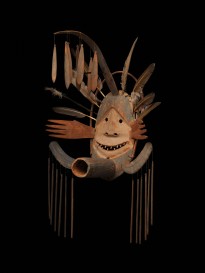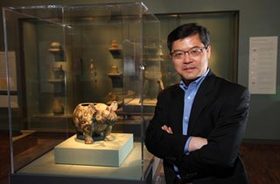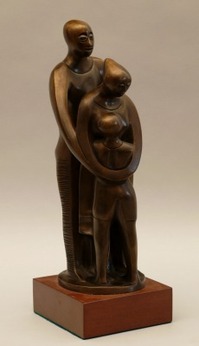Let’s return to the subject of Yup’ik masks, which as you may remember, I posted about here two weeks ago. Canadian dealer Donald Ellis was taking two prize specimens to the Winter Antiques Show in New York, which opened at a party on Thursday evening.
 Ellis was asking more than $2 million for the both Donati Studio Mask and another mask dubbed the Donati Fifth Avenue mask.
Ellis was asking more than $2 million for the both Donati Studio Mask and another mask dubbed the Donati Fifth Avenue mask.
Both sold almost immediately. The Fifth Avenue mask was the first to go, purchased by a New York collector of modern and contemporary art — one who also owns Native American works — for about $2.1 million, thus setting a new record for Indian works.
At 6:42 p.m, Ellis sold the Studio mask (at right) for more than $2.5 million — breaking his minutes-old record. I got no answer when I asked who that purchaser was.
I’m glad to see Native American works of such high quality getting their moment in the sun.
Before this, only a handful of Native American works have sold in the six figures.
Here’s a link to my Wall Street Journal piece of two weeks ago, which has more background.

 You’ll recall that the museum has been on
You’ll recall that the museum has been on 

